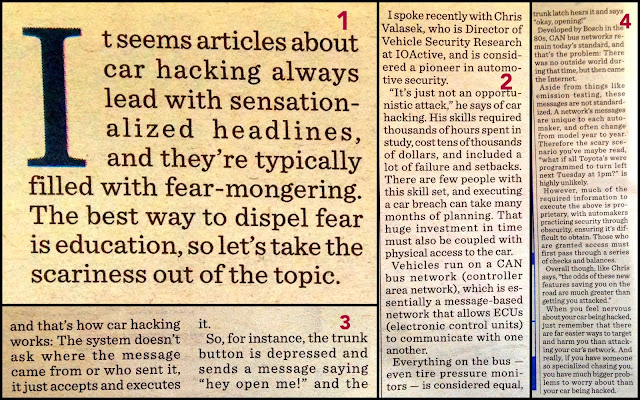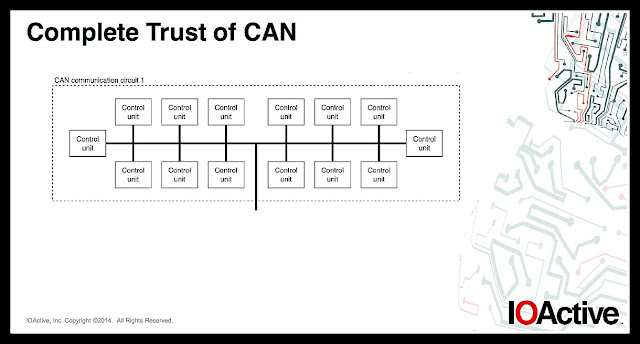(photo credit: Wikipedia and author EE JRW)
The computer in your car runs on a network called CAN bus.
The Controller Area Network (CAN) is the standard for all vehicles. More specifically, inside your car there are almost 100 computers (called ECUs – Electronic Control Units) which use CAN bus to talk to one another.
There’s 2 problems with CAN bus:
1
Everything on the bus – big and small – is considered equal, so steering is equal to say, the fuel door latch. Moreover, the system never wonders where the message came from or who sent it, it just accepts and executes it.
Example: the fuel door button is pulled, sending a message that says, “open now!” and the fuel door says “okay got it, opening!”
That’s how car hacking works – because there’s no checks or balances, the system just accepts it and executes the command.
2
CAN bus was developed by Bosch in the 1980s, built when there was no outside world.
But then along came the Internet, and the connected car, and that’s why vehicles today are vulernable – they’re built on a system that isn’t ready to be secured for the internet because it never even imagined the internet would exist.




